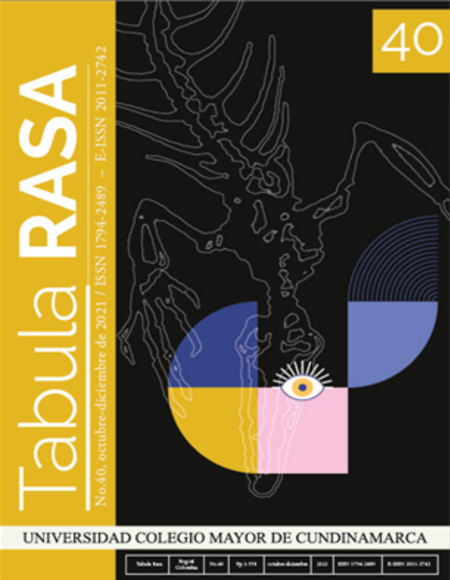Of Packs, Suffering, and Rescues: Violence and Relations between Dogs and Humans in Two Mexican Border Cities
De jaurías, sufrimientos y rescates: violencia y relaciones entre perros y humanos en dos ciudades fronterizas mexicanas
Show authors biography
Dogs have an important role in Mexican cities streets, especially in peripheral or frontier settings. This article explores these dog presences in two cities battered by violence, along with the relations those animals build among each other, with humans and with their environment, drawing from the assumption that dogs are active beings that build alliances, territories, landscapes, and affective bonds. This is a four-hand writing here
we enter into dialogue with the discoveries and findings of two research works conducted under the multispecies ethnography approach at two Mexican urban settings. On the one hand, there was Tecámac, southern Mexico Valley Metropolitan Area, and in Ciudad Juárez, on the northern frontier of the state of Chihuahua. We think those two setting fill the conditions for an interesting comparison, since they represent highly populated urban centers, but they continue to appear as frontiers between rural and urban landscapes. Also, both places have a shared feature of important waves of violence that have shaped the daily lives of their human and non-human inhabitants.
Article visits 136 | PDF visits 162
Downloads
Butler, J. (2020). Sin miedo. México: Taurus.
Brown, F. (2016). The City is More than Human: An Animal History of Seattle. Seattle: University of Washington Press.
Contreras Saldaña, M. E. (2021) Efectos socioterritoriales en dos fraccionamientos de interés social en Ciudad Juárez, 2008-2019. (Tesis de Doctorado). Universidad Nacional Autónoma de México, Ciudad de México. http://132.248.9.195/ptd2021/enero/0806130/Index.html
Carrión, L. (2018, 17 de octubre). En Ecatepec y Tecámac, oleada feminicida. Revista Proceso. https://www.proceso.com.mx/libros/2018/10/17/en-ecatepec-tecamac-oleadafeminicida-213945.html
Digard, J. P. (2004). La construction sociale d´ un animal domestique: le pitbull. Anthropozoologica 39(1), 17-26. https://sciencepress.mnhn.fr/sites/default/files/articles/pdf/az2004n1a1.pdf
Durán, V. (2017). Fragmentos de una vida. Las muertas que no se ven: el limbo de los feminicidios. https://contralacorrupcion.mx/web/femimicidiosocultos/
El Gráfico (2019, 29 de enero). Dejan cadáver de mujer desnuda y con severas heridas en Tecámac. El Gráfico. https://www.elgrafico.mx/la-roja/dejan-cadaver-de-mujer-desnuday-con-severas-heridas-en-los-heroes-tecamac
Esposito, R. (2012). Inmunidad, comunidad, biopolítica. Las torres de Lucca. 0, 101-114. http://www.lastorresdelucca.org/index.php/ojs/article/view/24/26
Fiscalía de Feminicidios de Ecatepec (2019). Asunto: el que se trata, Ecatepec, Edo. de México, 01 de febrero de 2019. Fiscalía especializada de Feminicidios, Gobierno del Estado de México. https://www.facebook.com/AytoTecamac/photos/a.271888896836430/283689188989734/
García, M. &Alvarado Álvarez, I. (2013, 4 de septiembre). Mexico’s City of Dogs. Aljazeera America. http://america.aljazeera.com/articles/2013/9/4/city-of-dogs.html
Girard, R. (1986). El chivo expiatorio. Barcelona: Anagrama.
Gudiño, A. (2019, 4 de febrero). Edomex: en un año 17 mil 172 mordeduras de perros. Milenio. https://www.milenio.com/ciencia-y-salud/edomex-ano-17-mil-172-mordeduras-perros
Kajiwara, H. (2016). Human-animal interaction in Post-Tsunami Japan. Humanimalia: a journal of human/animal interface studies, 7(2), 84-108. https://www.depauw.edu/site/humanimalia/issue%2014/pdfs/kajiwara-pdf.pdf
Kohn, E. (2017) How Dogs Dream… Diez años después. AIBR: Revista de Antropología Iberoamericana, 12(3), 273-311. https://dialnet.unirioja.es/servlet/articulo?codigo=6276949
Haraway, D. (2017). Manifiesto de las especies de compañía: perros, gentes y otredad significativa. Córdoba: Bocavulvaria Ediciones.
Love a Bull (2018). The history of Pitbulls. Love a Bull: Education, advocacy, responsibility. http://love-a-bull.org/resources/the-history-of-pit-bulls/
Montejano Escamilla, J. A., Caudillo Cos, C.A. & Cervantes Salas, M. (2018). Vivienda de interés social, segregación residencial y accesibilidad: análisis de 121 conjuntos urbanos en el arco nororiente del Valle de México, 2001-2010. Estudios Demográficos urbanos, 33(1), 187-224. https://doi.org/10.24201/edu.v33i1.1639
Narayan, Y. (2017) Street Dogs at the Intersection of Colonialism and Informality: ‘Subaltern Animism’ as a Posthuman Critique of Indian Cities. Environment and Planning D: Society and Space, 35(3), 475-494. https://doi.org/10.1177/0263775816672860
Notimex (2017, 4 de julio) Recogen 222 animales muertos en calles de Ciudad Juárez. MVS Noticias, https://mvsnoticias.com/noticias/estados/recogen-222-animales-muertosen-calles-de-ciudad-juarez-748/
Ovalle, L. (2020, 4 de abril). En México hay hasta 25 millones de perros y gatos callejeros. Milenio, https://www.milenio.com/estados/dia-internacional-de-los-animales-callejeros-4-de-abril.
Ortiz Struck, A. (2014). Urbanismos limítrofes. La expansión territorial como expresión de los servicios financieros. En I. Torres (Ed.). Siete proyectos sobre la ciudad de México (pp.53-62). México: Like Editorial.
Ramírez, I. (2019, 12 de septiembre). De tierra, más de 5 mil calles. La Verdad, https://laverdadjuarez.com/index.php/2019/09/12/de-tierra-mas-de-5-mil-calles/
Rayas, Gabriela (2017, 22 de agosto). Roban perros de seguridad con valor de 200 mil pesos. Tiempo, la noticia digital, http://tiempo.com.mx/noticia/95555-ex_empleados_robaron_cinco_perros_empresa_de_seguridad/1.
Redacción/Sin Embargo (2014, 28 de agosto). ¿Se sienten inseguros? Compren un perro, pongan sistema de alarma o candados: SSP de Veracruz. Sin Embargo, https://www.sinembargo.mx/28-08-2014/1101210
Salazar, A. (2017, 13 de marzo). En Edomex, cinco millones de perros en situación de calle. Milenio. https://www.milenio.com/estados/en-edomex-cinco-millones-de-perrosen-situacion-de-calle
Salinas, J. & Chávez, S. (2019, 9 de febrero). Fundación recibe a perros que mataron a mujer en Tecámac. La Jornada. https://www.jornada.com.mx/2019/02/09/estados/025n3est
Shir-Vertesh, D. (2012) «Flexible Personhood»: Loving Animals as Family Members in Israel. American Anthropologist, 114(3). 420-432. https://doi.org/10.1111/j.1548-1433.2012.01443.x
Sundberg, J. (2011). Diabolic Caminos in the Desert and Cat Fights on the Río: A Posthumanist Political Ecology of Boundary Enforcement in the United States-Mexico Borderlands. Annals of the Association of American Geographers, 101(2), 318-336. https://doi.org/10.1080/00045608.2010.538323
Wright, M. W. (2001) Feminine Villains, Masculine Heroes, and the Reproduction of Ciudad Juárez. Social Text, 19(4[69]), 93-113. https://doi.org/10.1215/01642472-19-4_69-93




